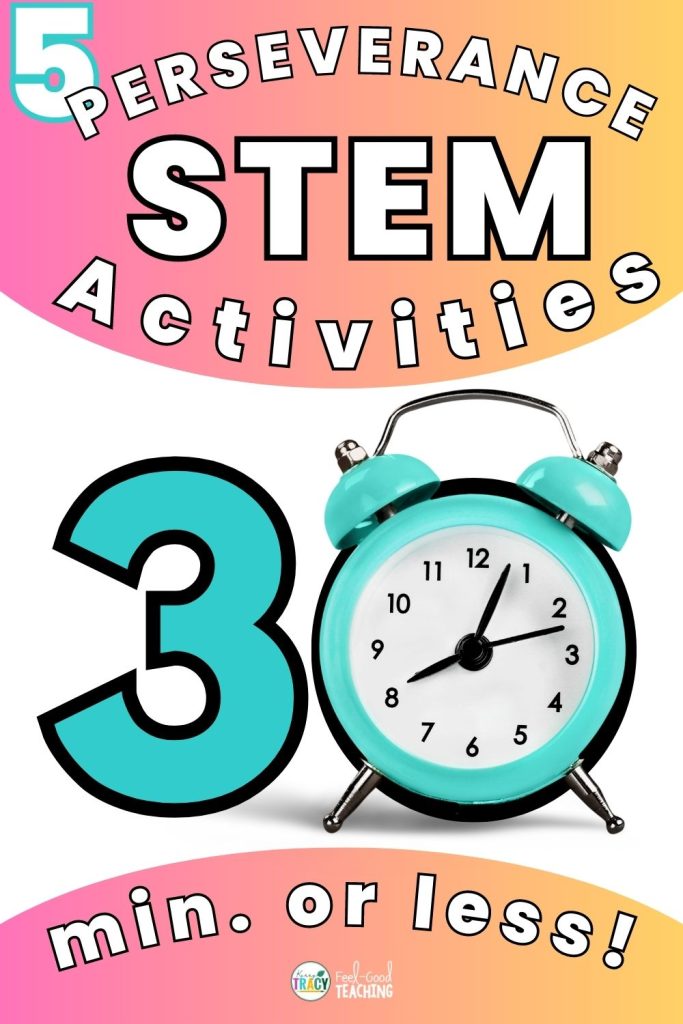Sometimes we get frustrated when students give up on STEM challenge activities too easily, but if we stop to think about it, it makes so much sense. Our culture is one that ridicules failure and avoids it at all costs. So we have an uphill — but seriously important — climb to help students shift their perspective about failure and learn to use it productively.
As with so many things, a varied and frequent approach works best, so I’m offering you 5 simple ideas today you can do in 30 minutes or less to help students develop perseverance & comfort with productive failure.
This is the fifth installment in our 30 STEM activities in 30 minutes or less series. Don’t worry if you’ve missed the previous posts, you can click that link above to catch up. 🥰
My goal remains the same with each post in the series: to provide you with easy yet challenging STEM activities that you can implement in a flash with at least one free resource each post.
So let’s get started with failure & perseverance!
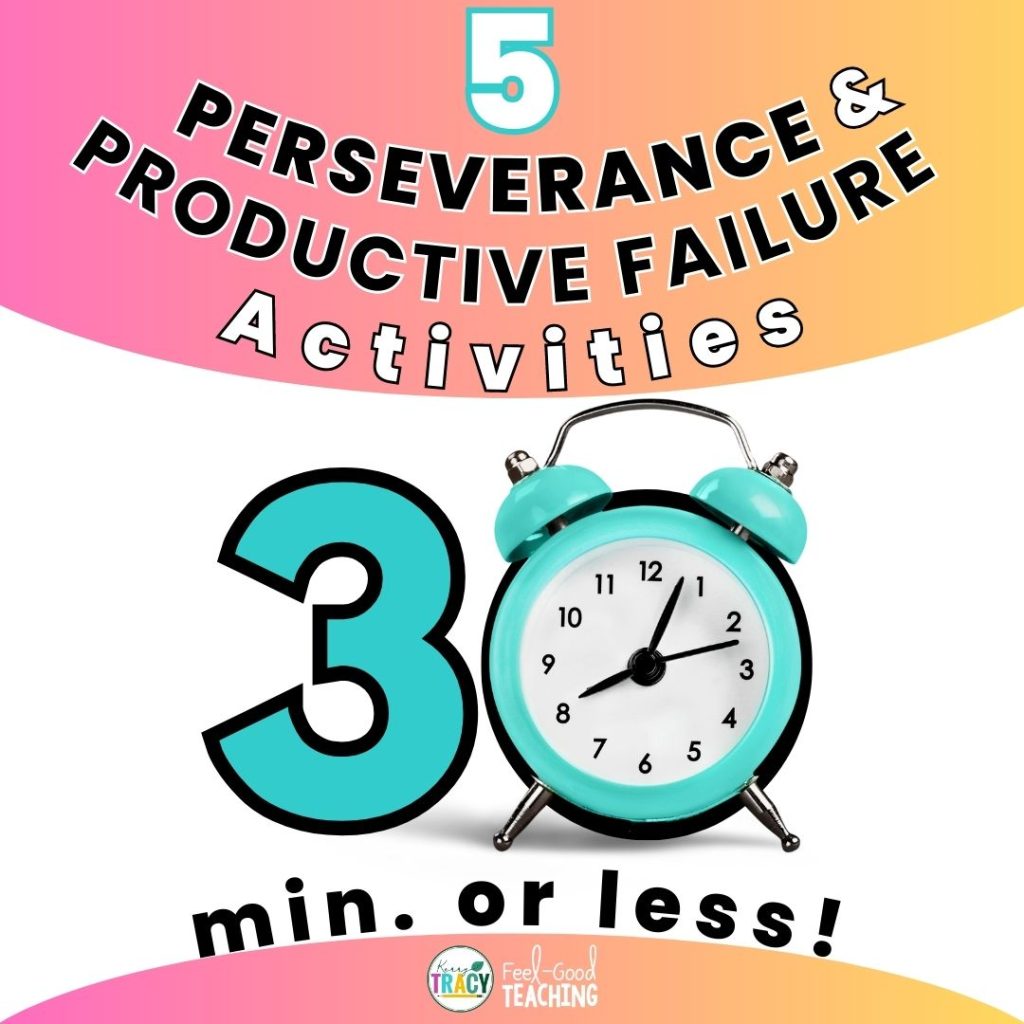
Easy STEM Activity #21:
Failtober Quotes
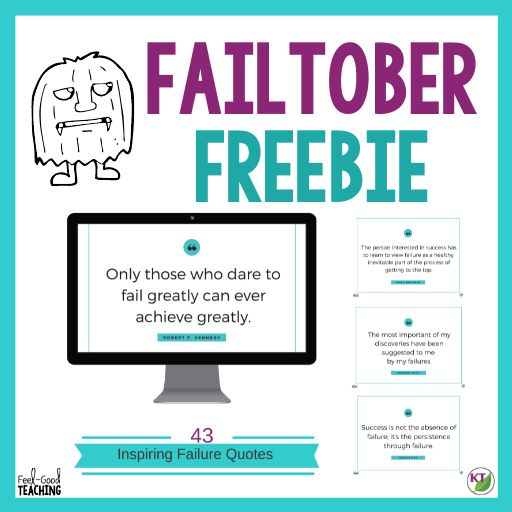
Awhile back, I decided October should be dubbed Failtober because fear of failure is seriously terrifying! I collected failure quotes to discuss and reflect on for each day (actually, I gathered more than I needed because I couldn’t stop myself).
Use these quotes to spark discussion and begin the perspective shift that failure isn’t to be feared at all. It’s actually 100% necessary for progress & growth! It’s part of the process!
Easy STEM Activity #22:
Famous Failures
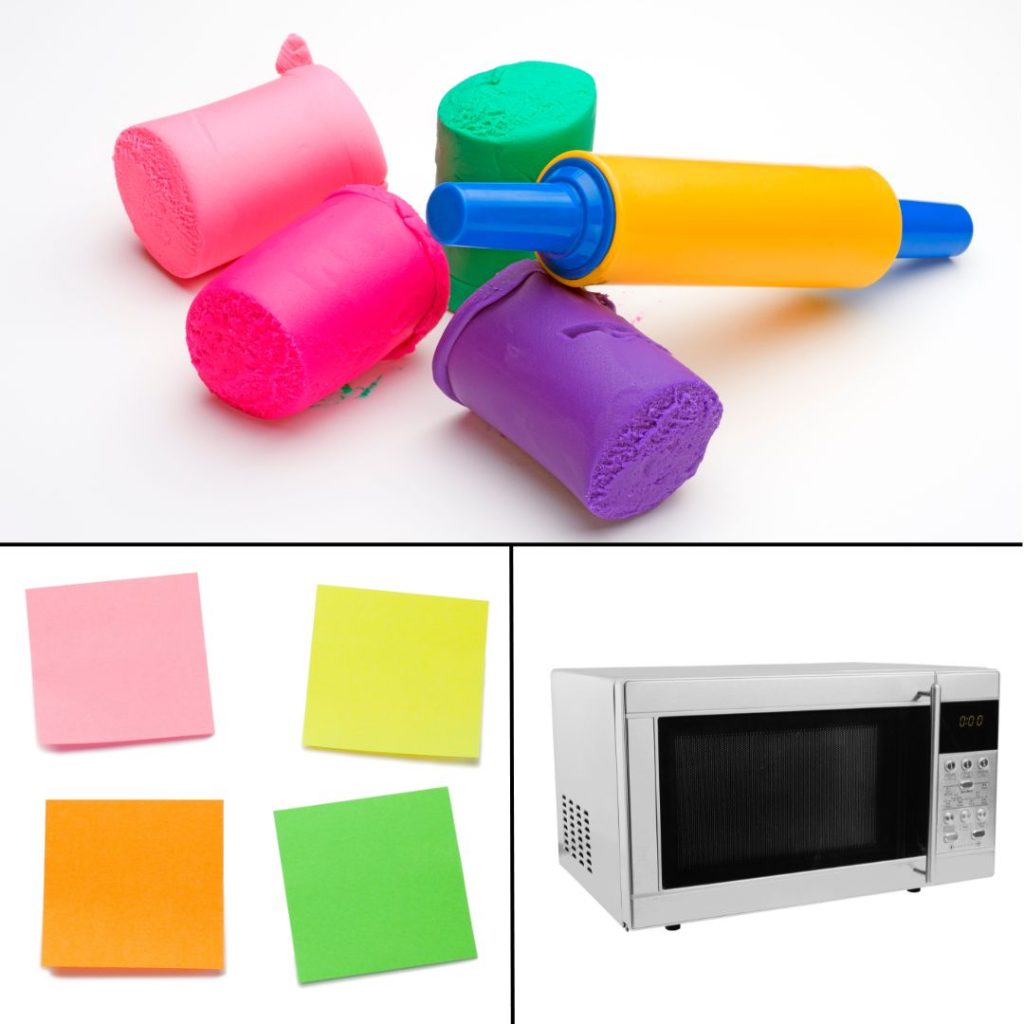
In line with the quotes above, I’m convinced there all wildly successful people’s origin stories are riddled with failure. It’s simply not avoidable if you are challenging yourself. To be clear, I’m not suggesting toxic positivity when it comes to failure. No one likes to fail. Failing feels bad and it’s disappointing & frustrating. But when we can learn to expect it as part of the process, we can learn to use it productively and see opportunities in failures. I’ve gathered a few articles you may want to check out with your students to get inspired by how these famous failures found success! Encourage students to share stories of failure they come across in the world and their own lives too.
Articles to check out:
8 Successful Products That Only Exist Because of Failure
Why the Best Success Stories Often Start with Failure
Easy STEM Activity #23:
Plan for Frustration & Shutdown

Quotes & stories about other people’s failures are an easy place to start because we don’t have to take the failure personally. But you and I both know it’s harder to keep a logical, cool, calm & collected perspective when we’re the ones failing!
One of the best things you can do when your students are struggling to persevere and want to give up is to view that as an opportunity to help them develop tools to work through their frustration, shutdown, and self-sabotage.
Trust me, whatever you were planning on getting out of the STEM Challenge or activity pales in comparison to teaching the critical life skill of perseverance! 💪
I suggest stopping and working through as a class what happens in our brains when we want to give up and how our brains are trying to protect us, but what they’re really doing is sabotaging us. Then elicit students’ help in creating an anchor chart of realistic, doable steps (no more than 3) they can try the next time they want to give up on a STEM challenge.
The thing is, we often tell student to persevere, but we rarely show them how to do that when they’re feeling frustration, embarrassment and shame. We should take the heavy weight of that off by teaching them to learn to expect those emotions may come and teach them skills to process them. I put together a short PD with a script of how to have the perseverance & productive failure discussion, along with a sample anchor chart.
Easy STEM Activity #24:
Real-World “Impossible” Challenges
I love Mark Rober’s videos. The one above on working through how to create a cheap, portable Malaria test is INCREDIBLE! At every turn, the criteria & constraints seem impossible, but the engineers keep going and find an ingenious solution. This video is so inspiring. Give it a watch, and share it with your students for inspiration and discussion if you agree!
Easy STEM Activity #25:
Intentional Failure Practice
Let me loop back to the beginning for a moment. I think an excellent idea to work into your regular schedule is intentional failure practice. A LOT of our high-performers never really struggle in school, so they never learn the skills to work through struggle. This is why so many high-achievers crumble when they go off to college and encounter failure for the first time as adults!
We focus so much on teaching students how to succeed, but not how to fail (productively). I think it’s well-past time to change that, and I’d go so far to say it’s educational malpractice not to teach students how to fail.
You might start intentional failure practice as part of Failtober and continue on “Failure Fridays”. Have students choose a skill they don’t currently have to build during intentional failure practice, where the #1 goal is to keep going. Maybe they want to learn to juggle or draw a realistic picture of a giraffe. The key is to pick something challenging & that can be practiced in class. They should have an accountability partner or group to share progress. If they succeed at a given task, they must choose a new goal to pursue. You can also give them a set amount of weeks to practice before they’re allowed to move on to a different goal. Perhaps I give it 4-6 weeks to learn to juggle. If at the end of 6 weeks I haven’t succeeded, but I want to switch to a new goal to pursue, I can do that. We don’t want to condemn them to torture, but we do want them to practice trying in the face of failure and not give up too soon.
I went over this as part of a STEM CON & Beyond presentation called, “If You Want Successful Students, Let Them Fail.” If I could, I’d change the end of the that to “Teach Them How to Fail” instead, but hindsight is 20/20!
I included an excerpt where I discuss triggering failure on purpose at the beginning of this section.
You can find additional ideas for Failtober & intentional failure practice on my sister site.
And here’s a bonus freebie to develop grit for grades K-2 from one of my STEM besties, Trina Deboree!
So that’s it for the fifth installment of 30 STEM activities you can do in 30 Minutes or Less (< if you missed any, head back to the beginning). The next 5 ideas will focus on developing hard skills & tools practice.
You’ll find a link to that below as well as the Ultimate 30 Minute STEM Activities Kit that’s packed with mind-bending activities that are easy for you & still challenging for students!
Don’t forget to grab the 5-week free STEM Bellringers sampler at the end of this post that
“See” you soon!
Check Out the Ultimate 30 Minute STEM Activities Bundle:
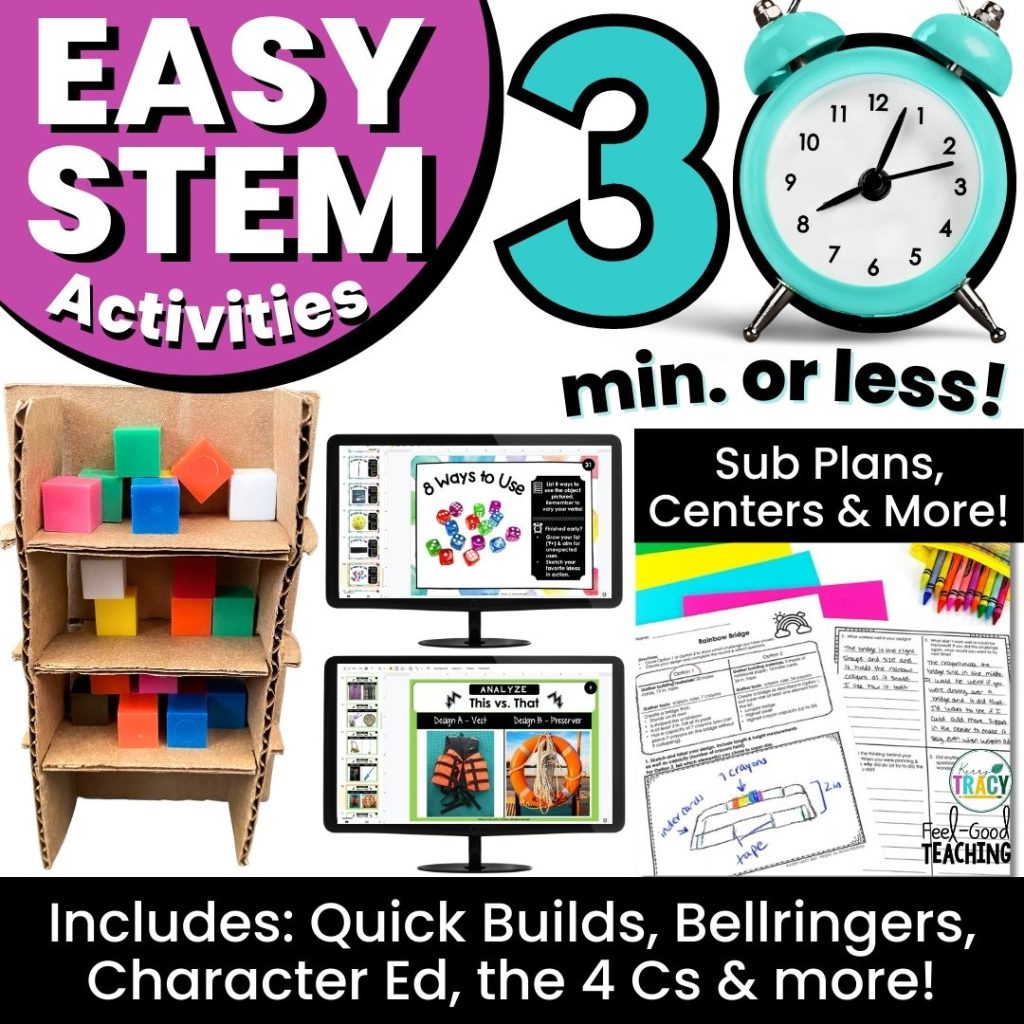
Pin Me!
